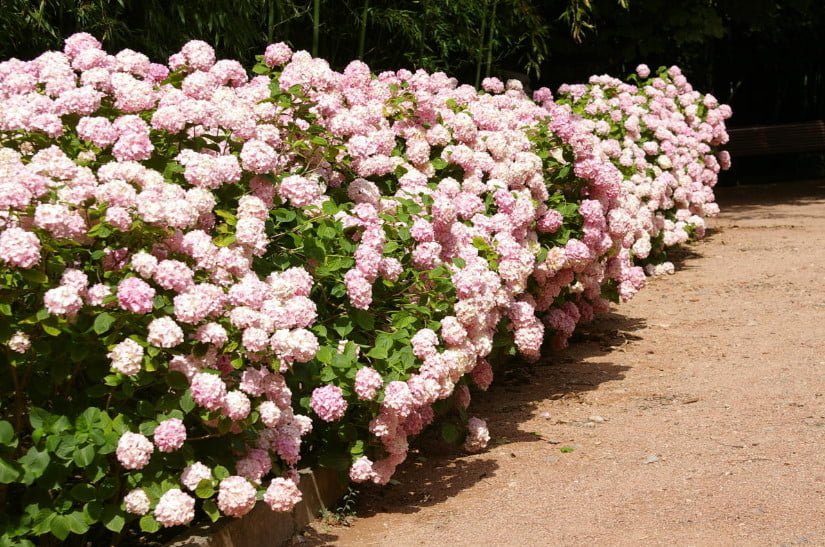
- Average, or actually hedges;
- The nuances of hedges from Weigela;
- Nuances of hedges from Laburnum;
- Nuances of hedges from Sambucus;
- Nuances of hedges from Syringa;
- Nuances of hedges from Philadelphia;
- The nuances of hedges from Forsythia;
- Nuances of hedges from Hibiscus ;
- Nuances of hedges from Hydrangea;
- The nuances of hedges from Lagerstroemia indica;
- The nuances of hedges from Oleander;
- Nuances of rose hedges;
- Blossoming living walls;
- And in conclusion-5 important points:;
They amaze us with the luxury of flowering, when the beauty of one shrub is multiplied several times. The madness of flowering hedges is always so bright, powerful that hardly anything else in our world can be compared with such splendor, except that fireworks with thousands of stars.
In medium and high hedges flowering potential is much greater. The main thing-the right care, which will allow such landings to fully show their capabilities. At the same time, the main threat to flowering is incorrect pruning of flowering hedges. Against their better to forget what a haircut, and be guided by the rule: better to cut less than you need, than to overdo it with the shears.
Average, or actually hedges
For them, especially a lot of spring-flowering species.
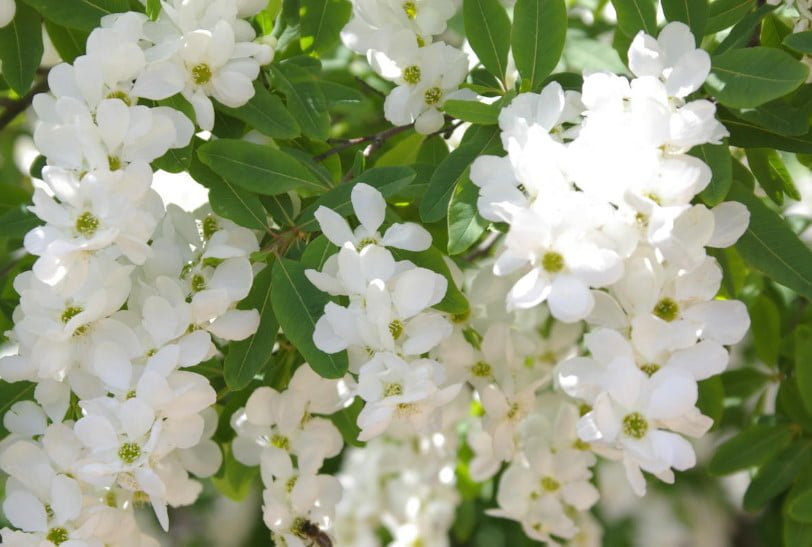
Undoubtedly, the real favorites of spring include:
- Spiraea, S. arguta, and others;
- Weigela;
- Laburnum;
- Philadelphia;
- Syringa;
- Forsythia;
- Exochorda and others.
The nuances of hedges from Weigela
Single-breed planting is likely to appeal to true fans of this Bush. More interesting variant — a combination of hedges of Weigela combined with Syringa, Deutzia, Philadelphus.
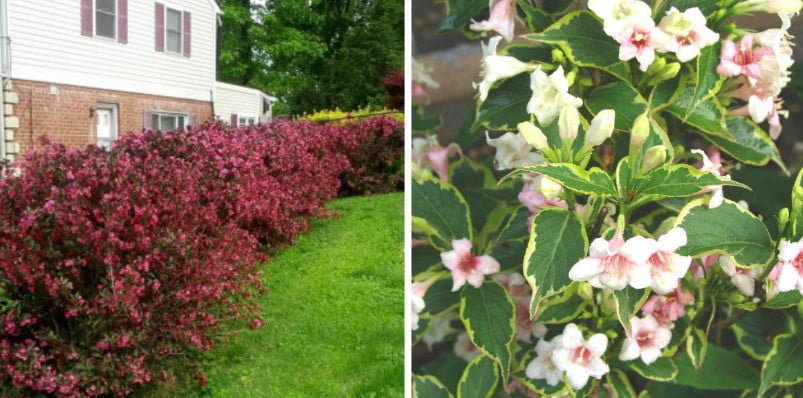
For more abundant flowering requires annual pruning of old shoots at the ground.
Nuances of hedges from Laburnum
Shrubs in plantings can be stretched and bare from below.
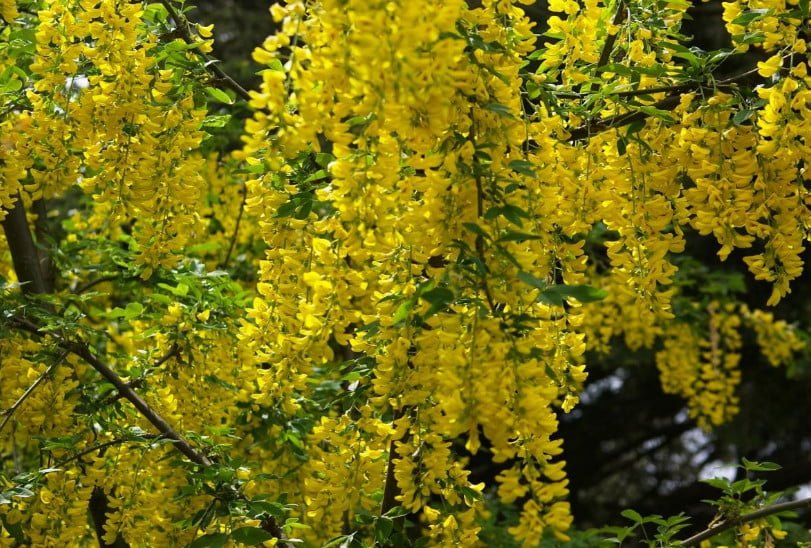
To mask this defect in front of them planted undersized shrubs or high floral perennials or annuals.
Nuances of hedges from Sambucus
They tolerate pruning, after which copiously produce new shoots, therefore it is appropriate for masking fence, shed, summer bathroom, shower, and a compost heap.
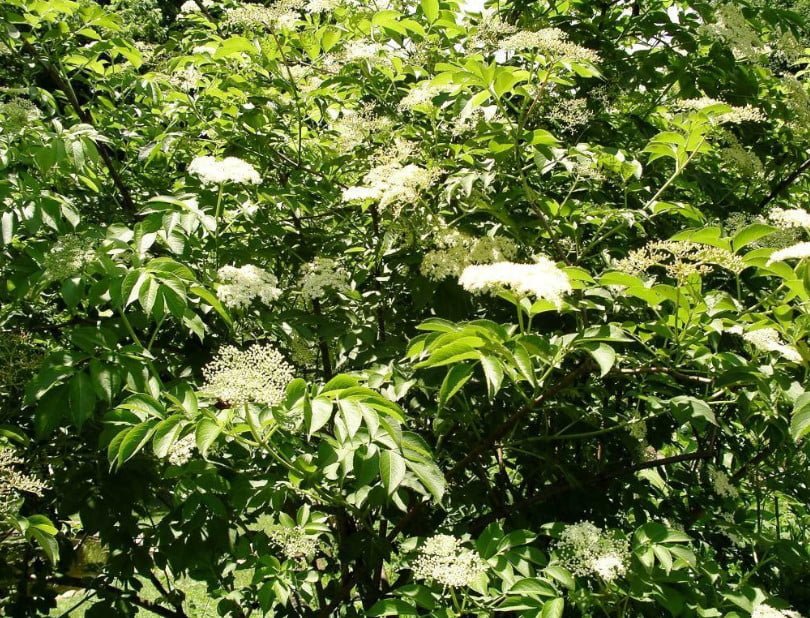
Because of the fragility of the need to trim every 5-6 years.
Nuances of hedges from Syringa
During the flowering period, it is not only a mad may beauty, but also a luxurious fragrance that many vacationers like.
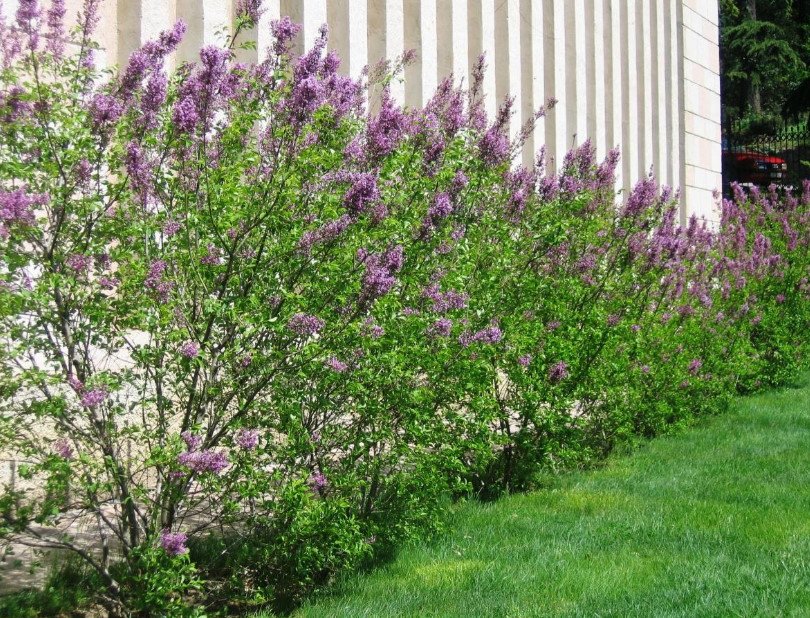
When planting should adhere to the distances between the plants 70-80 cm age bare the lower part of the bushes closed low shrubs or herbaceous perennials. To reduce the emergence of seedlings helps own-rooted planting material.
Nuances of hedges from Philadelphia
Despite the fact that they are well tolerated haircut, they are best used for free-growing hedges and borders with trimming strongly protruding shoots.
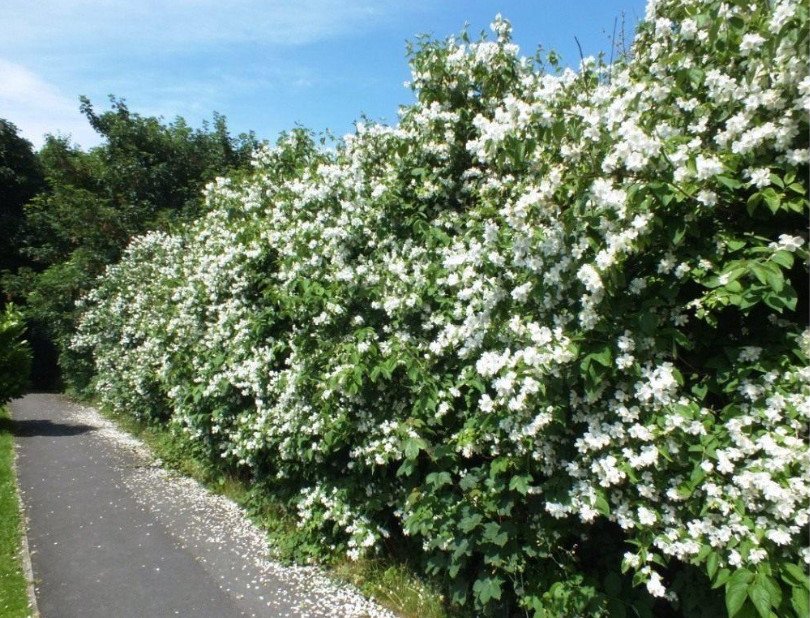
Only then can you see a really luxurious flowering. When planting should adhere to the distance between the bushes at least 50 cm.
The nuances of hedges from Forsythia
Only free-growing planting in all its glory delight summer residents in the spring (in the South — in March).

Cutting borders, hedges from Forsythia is not justified.
Letnetsvetuschih fences actually no less than those that bloom in the spring, and they are particularly spectacular in the South. Among them, the palm belongs to Hibiscus, Hydrangea, Lagerstroemia, Nerium oleander and, of course, roses.
Nuances of hedges from Hibiscus
For these purposes, Hibiscus syriacus and its varieties are optimally suited.
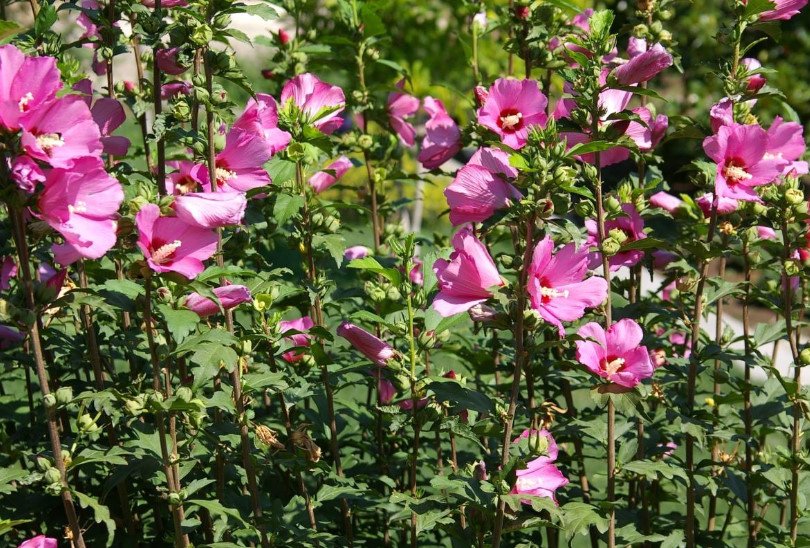
Fans of monochrome plantings can create a blooming line of one tone.

Hedges from Hibiscus are cut in early spring: the growth of the past is shortened by 1/3, the old branches are removed. Well in the early growth of the shoots to make a complete fertilizer.
Nuances of hedges from Hydrangea
To create suitable:
- Hydrangea macrophylla;
- H. paniculata;
- H. arborescens;
- H. sargentiana;
- H. quercifolia.

Hydrangea paniculata is used for free-growing single-row hedges, beautifully bordering garden paths. Annual pruning of old branches is necessary.

It forms flower buds on the shoots of the current year, so to stimulate flowering bushes should be cut, shortening the branches by almost 2/3, simultaneously removing the weak. If the bushes are not cut, they grow rapidly.
A real find is a hedge of a kind Hydrangea sargentiana.

The decoration of the fence will not only inflorescences, but also its “velvet” large leaves.
Unusual hedge of Hydrangea quercifolia.

Will attract the attention of not only large inflorescence and large leaves, resembling the leaves of Quercus robur.
Interesting decision to give will be combined fences of various types of Hydrangea. Especially high her fans will appreciate this shrub.

Hydrangea hedges pruned depending on species:
- in Hydrangea macrophylla remove weak, thin shoots and faded stems with 3-4 nearest leaves;
- Hydrangea arborescens and its varieties thinned in March, leaving, depending on the age and size of the Bush, 6-12 branches, which are cut into 2-3 buds of old wood.
The nuances of hedges from Lagerstroemia indica
In appearance, they are very similar to lilac, no wonder it is popularly called Indian lilac.
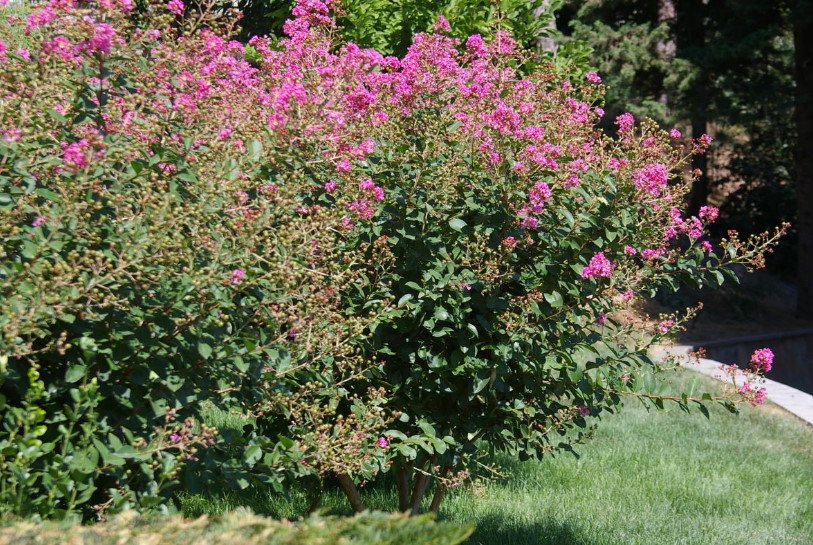
Often lagerstroemia form in standard form:
- the trunks clear of branches to a height of 1 m;
- after shortening vigorous shoots on 7-13 kidneys;
- remove all weak shoots and tree shoots.
Thus it turns out very effective, but visible hedge with “Windows”. Strengthen its protecting function can fit extra rows of trimmed border of Buxus, Euonymus.
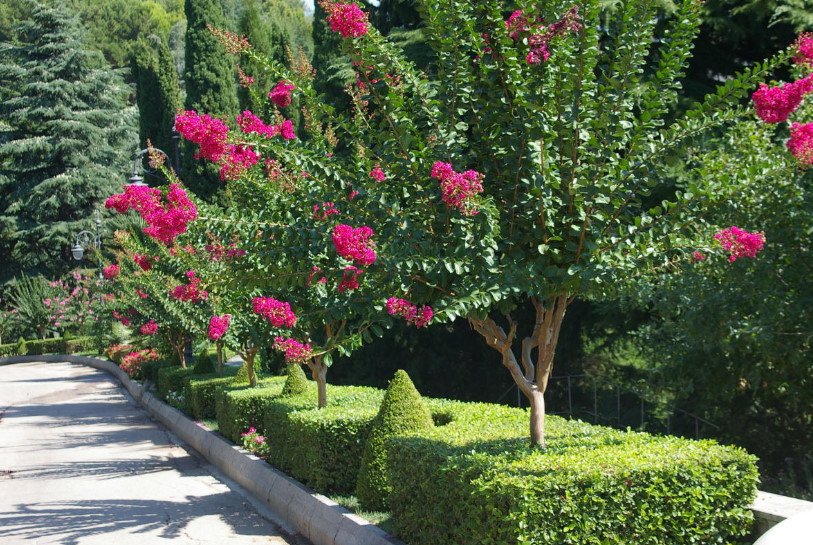
At the end of summer, Lagerstroemia indica is strongly affected by powdery mildew, so it is necessary to provide preventive treatment of hedges with systemic fungicides.
The nuances of hedges from Oleander
The wealth of varieties of Nerium oleander allows you to arrange (in the South) colorful hedges.
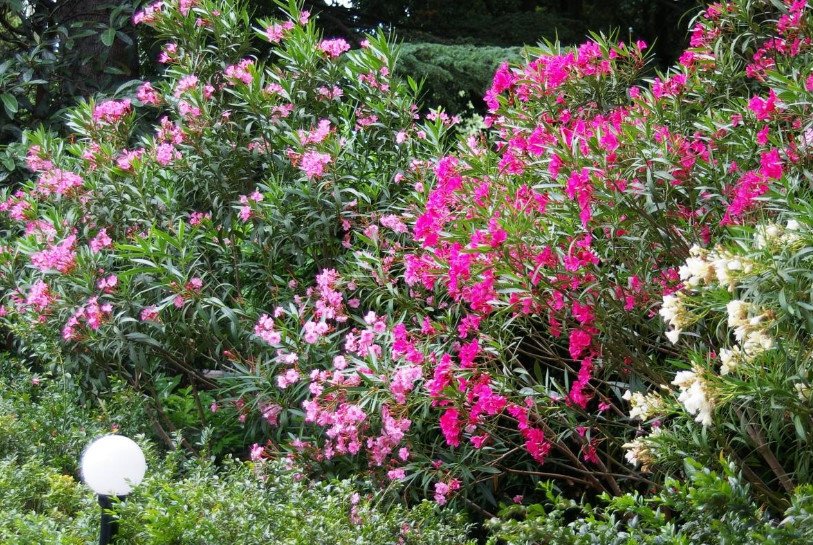
As I already wrote, such hedges are not cut, but cut. In late spring, weak shoots inside the crown and those that strongly deviate down its periphery are removed. Every 10-15 years, the oleander hedges are rejuvenated by pruning, after which 5-10 of the most developed shoots are left, and the rest are removed.
Nuances of rose hedges
In addition to short polyanthus and miniature roses, which are used in curbs, other varieties and forms of all modern garden groups, including ground cover, can be used to create medium hedges and walls (climbing and semi — climbing varieties-on supports).

In addition, Letnitsa hedges can be arranged from Abelia x grandiflora, Clerodendrum Bunge, Indigofera heterantha, Mýrtus commúnis, and others.
Blossoming living walls
They are acceptable for large-area suburban possessions.
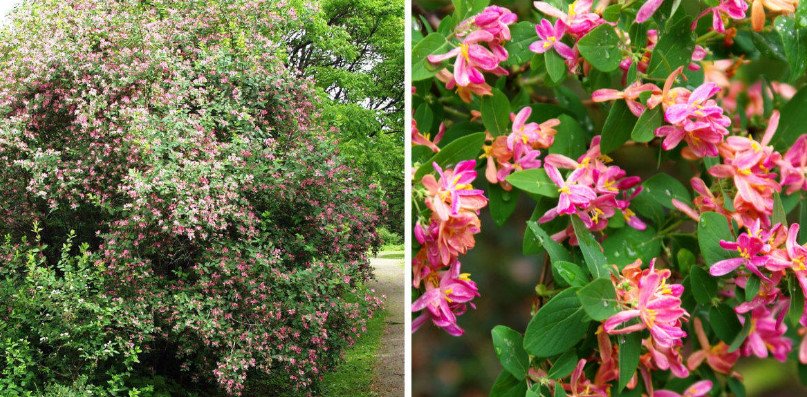
By the way I would like to remember the favorite of the last century — Lonicera tatarica up to 4 m, which was successfully used in such landings, but in recent years its popularity has decreased significantly due to the strong damage of aphids, Spanish fly, viral diseases.
Good free-growing (especially along drainage ditches, streams) living walls up to 4-5 m will be obtained from Viburnum opulus.

When planting should adhere to the distance between plants of 1.5 m. If for some reason you do not want to frame the plot Viburnum opulus, pay attention to its cousin, V. lantana, which is also capable of forming a living wall with a height of 5 m. In the South they can be replaced charming V. tinus.
Time-tested choice-Caragana arborescens and Caragana frutex, the real Champions of resistance to frost, drought, salinity.
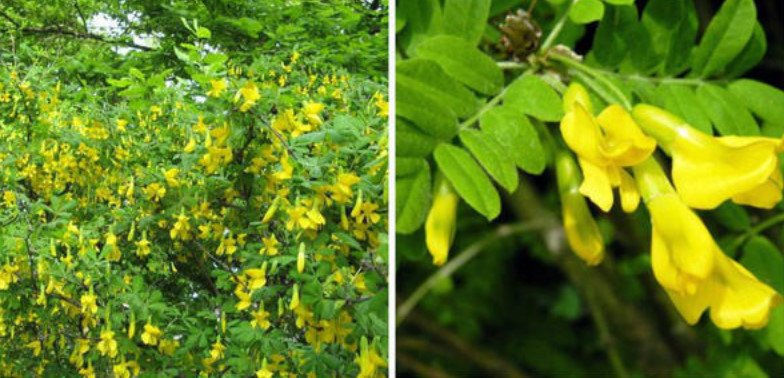
Such high hedges and walls every year need 2-fold pruning, without which much bare bottom.
And in conclusion-5 important points:
- luxurious free-growing flowering hedge can be arranged in the presence of sufficient space in the country;
- picking up the bushes on the timing of the dissolution of flowers, you can create a beautiful hedge of continuous flowering;
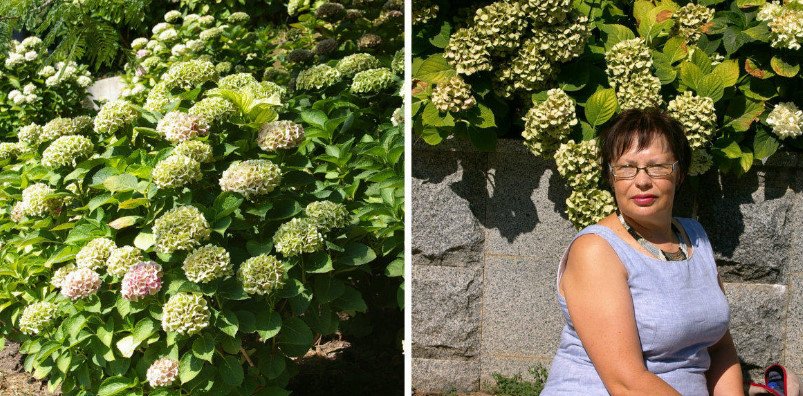
- the width of the hedge can be from 70 cm to 3 m or more;
- such hedges served a protective function and is not visible, usually they are doing 2-inline;
- a big plus of flowering species — they do not need a regular haircut. They need only a lightening pruning, which is carried out 1 time a year.
To be continued…
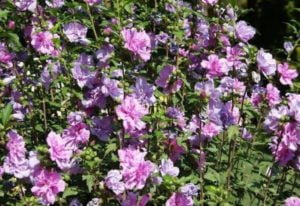
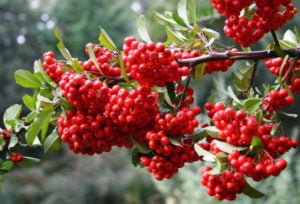

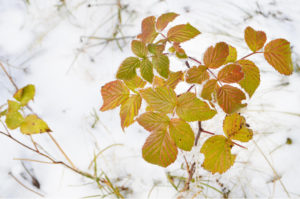
Leave a Reply